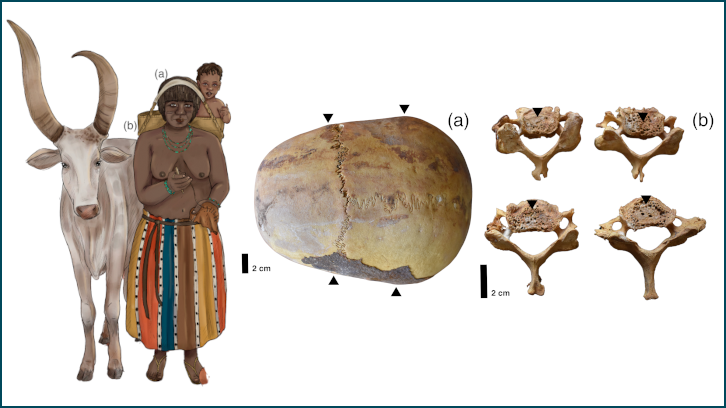Thin-sections, the past serving the future

In optical mineralogy and petrography, the use of the polished thin-sections is very common. These are 30µm-thick slices of samples attached to a glass slide. The thin-section was primary designed to be observed using an optical microscope, in this case a petrographic one. The petrographic microscope is equipped with two polarizers and a rotary circular stage that allow the observation of several characteristic optical properties of minerals such as the interference colors or the extinction positions.
The introduction of thin-sections in mineralogical studies emerged alongside the development of the petrographic microscope within the mid-19th century. Nowadays, petrographic thin-sections are still essential in the field of geology and mineralogy, and its use is gradually extending to other areas, such as studies on soils, pottery, bones, metals or other crystalline materials (crystallinity is the periodic arrangement of atoms or molecules that characterize internally minerals and most of the solids). However, outside of these areas, both thin-sections and the petrographic microscope are often perceived as tools of the past. Despite not being obsoletes, they are generally marginalized in favor of more sophisticated techniques such as electronic microscopy and related techniques. Recently, a group of researchers have published two articles in the field of archeology that refute this perception and have shown how thin-sections are still in force and can be adapted to the research and new tools of the 21st century.
In the first paper (Maritan et al., 2018) the characterization of several secondary phases precipitated in prehistoric pottery is described. The term secondary indicates here that the precipitation occurred long after the pottery was produced. The composition and nature of the precipitates can bring relevant information on the burial conditions of the pottery sherds or even on the use of ceramic objects. Some of these precipitates had been identified as minerals in previous publications based on measurements performed using analytic accessories of electronic microscopes. New observations and analyses have been made using thin-section preparations, combining both optical microscope and synchrotron through-the-substrate microdiffraction (tts-μXRD); the latter made at the BL04-MSPD line of the ALBA synchrotron facility. These have allowed to confirm in some cases the crystalline nature of the precipitates and therefore the existence of true minerals; however, in other cases, the precipitates have revealed to be amorphous and therefore they cannot be considered mineral precipitates despite having a composition that matches approximately that of a given mineral (Fig 1) .
Figure 1. a) SEM-BSE image of a secondary precipitate that is chemically compatible with vivianite, Fe3(PO4)2·8H2O and mitridatite, Ca2Fe3(PO4)3·3H2O. b) Image obtained from a thin-section of the same type of precipitate, the center of the precipitate is indeed crystalline and it can be confirmed that is vivianite but around it there is an amorphous solid (optically black with analyzed light), formed by alteration and therefore it is not mitridatite.
In the second paper (Di Febo et al., 2019), we want to underline the potential of thin-section preparations for the study of microcrystals embedded in glazes from archaeological glazed ceramics. The characterization of such microcrystals provides data on the production process of the glazes and the used raw materials. Through a series of examples it becomes clear how in this particular samples the observation of thin-section using the petrographic microscope provides much more information than observations made using an electronic microscope (this is largely due to the fact that the glass is opaque to the electrons but transparent to light), Fig. 2. The combination of optical images with local analyses made directly on the thin-section (using tts-μXRD and μRaman) is so useful that prompt us to envisage the development of a new type of petrography for this specific field of study.
Figura 2. a) SEM-BSE image of a blue glaze fragment where only small mineral sections of uncertain morphology are observed. b) Image of exactly the same area seen under a petrographic microscope where it becomes clear that the crystals are acicular, the analysis using tts-μXRD allowed to identify them as Pb-Ca arsenates.
Department of Geology
Universitat Autònoma de Barcelona1
Department of Sciences of Antiquity and the Middle Ages
Universitat Autònoma de Barcelona2
Department of Crystallography
Institut de Ciència de Materials de Barcelona3
References
Maritan, Lara, Lluís Casas, Anna Crespi, Elisa Gravagna, Jordi Rius, Oriol Vallcorba and Donatella Usai. (2018). Synchrotron tts-µXRD identification of secondary phases in ancient ceramics. Heritage Science, 6:74. DOI: https://doi.org/10.1186/s40494-018-0240-z.
Di Febo, Roberta, Lluís Casas, Jordi Rius, Riccardo Tagliapietra and Joan Carles Melgarejo. (2019). Breaking Preconceptions: Thin Section Petrography For Ceramic Glaze Microstructures. Minerals, 9(2), 113. DOI: https://doi.org/10.3390/min9020113.


